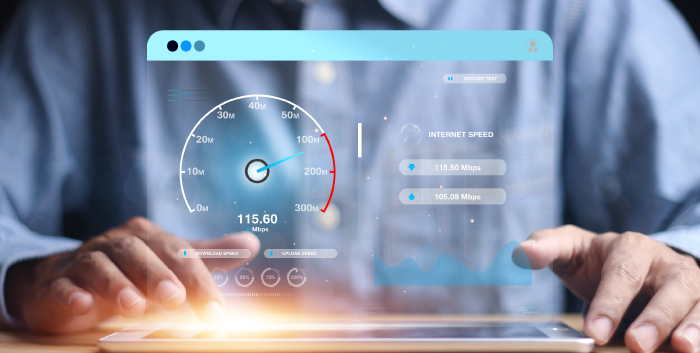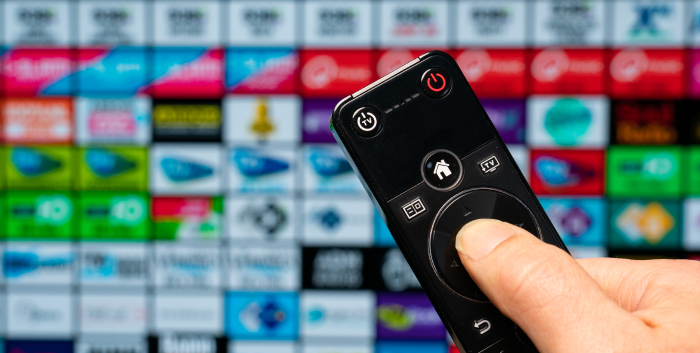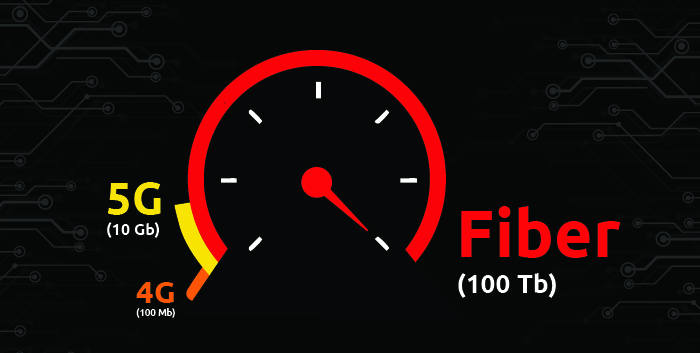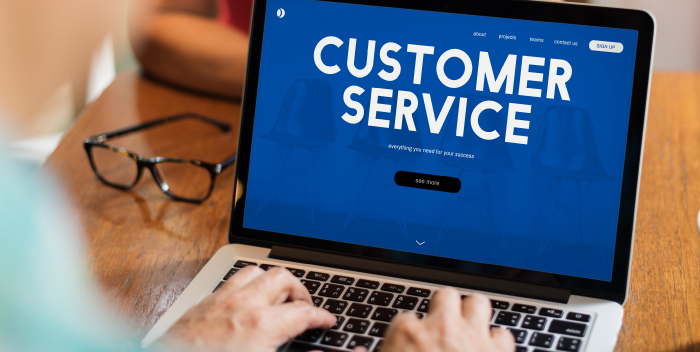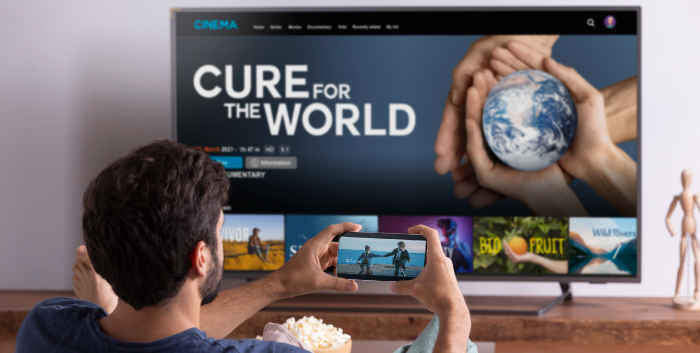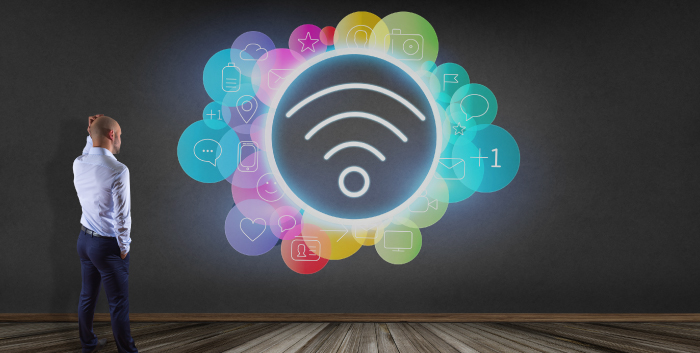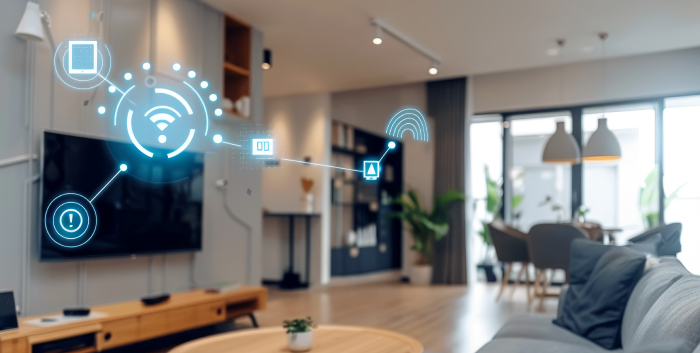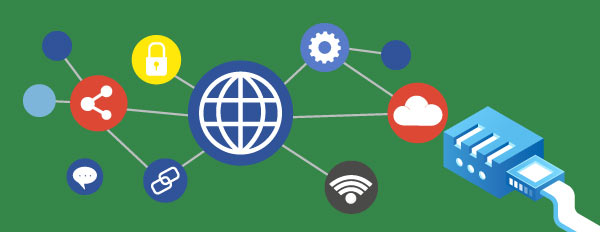Remember when "streaming" just meant watching movies?
Picture this: It's a lazy Sunday afternoon in 2010. You're browsing Netflix, deciding which movie to watch. Fast forward to today, and that same technology that changed how we consume entertainment is now transforming how we learn. Pretty wild, right?
The pandemic kicked this transformation into overdrive, triggering a jaw-dropping 200% surge in educational OTT (Over-The-Top) platform users. Now, a farmer in rural India can learn cutting-edge agricultural techniques on his smartphone, while a medical student in Brazil practices virtual surgeries using the same streaming technology that delivers the latest season of your favorite show.
But this isn't just about watching lectures on your laptop instead of sitting in a classroom. It's about completely reimagining what education can be.
"We're witnessing the most significant democratization of knowledge since the printing press." — Dr. Elena Vazquez, Education Policy Researcher
Wait, what exactly is "educational OTT"?
Before we dive deeper, let's break this down. OTT (Over-The-Top) simply means content delivered via the internet, bypassing traditional distribution methods. Think Netflix instead of cable TV.
Educational OTT applies this same approach to learning—delivering courses, interactive content, and assessments directly to students via the internet, without the need for physical classrooms or printed materials.
And it's booming. The global e-learning market is set to reach a mind-boggling $457.8 billion by 2026, with OTT platforms leading the charge as the primary delivery method for this knowledge revolution.
How did we get here? The evolution from cat videos to calculus
Entertainment paved the way (and it's kind of fascinating)
The journey from pure entertainment to educational powerhouse began in the late 2000s. Remember when Netflix switched from mailing DVDs to streaming content online? That move established crucial technological infrastructure that would later become the backbone of educational platforms:
- Content delivery networks (CDNs) that efficiently distribute videos worldwide
- Adaptive bitrate streaming that adjusts quality based on your internet speed
- Recommendation engines that suggest what to watch next
What's super interesting is how these entertainment technologies transferred to education with such a perfect fit. The goals were surprisingly similar: keeping users engaged.
Two game-changing innovations made the jump:
1. From "What to watch next" to "What to learn next"
Netflix analyzing your viewing habits to suggest your next binge-watch became Coursera recommending courses based on your learning history and career goals. These personalized learning paths aren't just convenient—they increase course completion rates by up to 60% compared to one-size-fits-all approaches.
2. From "Watch anywhere" to "Learn anywhere"
Remember when streaming services migrated from desktop-only to mobile apps? That same shift enabled education to escape the computer lab. Today, nearly 3 out of 4 learners access educational content on smartphones, with 40% switching between devices during a single learning session.
Got a 15-minute commute? Perfect time to knock out a quick lesson!
The pandemic changed everything (but maybe for the better?)
Then COVID-19 hit, forcing schools and universities worldwide to adopt remote learning practically overnight. This emergency response revealed surprising benefits:
- Students could learn at their own pace
- Geographic barriers vanished
- Many learners actually performed better in properly designed online environments
As Harvard Business Review noted, "What began as an emergency response has evolved into a strategic advantage for forward-thinking institutions."
5 ways OTT platforms are completely transforming how we learn
1. AI is becoming your personal tutor (and it's getting scary good)
Remember struggling through a textbook chapter that made absolutely no sense, while the rest of the class seemed to get it? Educational OTT platforms are solving this problem with AI that continuously analyzes how you learn—from your content choices to quiz performance—creating truly personalized learning journeys.
Platforms like Squirrel AI show just how powerful this approach can be:
- 30% reduction in required learning time
- 20% improvement in mastery scores
As Dr. Anand Sharma, Chief Learning Officer at EdTech Innovations puts it: "Traditional education treats every student identically. OTT platforms recognize that each learner brings unique knowledge, learning styles, and goals to the table, and can adapt in real-time."
Imagine a classroom that automatically adjusts to your needs, pace, and learning style. That's what's happening right now.
2. It's not just boring videos (thank goodness!)
Gone are the days of simply recording a professor's lecture and calling it "online education." Today's educational OTT platforms offer:
- Interactive simulations where engineering students can build and test virtual bridges
- VR field trips allowing geology students to explore rock formations from their bedrooms
- Gamified assessments providing immediate feedback (and making learning actually fun)
- Collaborative workspaces enabling students to work together in real-time
This multimedia approach doesn't just keep you awake—it works better. Research shows that interactive content increases information retention by 42% compared to passive lectures.
Have you ever fallen asleep during a lecture? Yeah, that's much harder to do when you're actively participating!
3. Learning is no longer limited by geography or economics
Here's where the true power of educational OTT shines: breaking down barriers that have limited access to quality education for centuries.
Features like offline viewing allow students in areas with spotty internet to download lectures when connectivity is available. MIT's OpenCourseWare reaches 1.5 million monthly users across 196 countries, while platforms like Khan Academy provide free, translated content in over 40 languages.
Think about what this means: A talented student in a remote village now has access to world-class education that was previously available only to those who could afford to travel to and pay for top institutions.
4. Your digital diploma is becoming tamper-proof
As education moves online, two critical questions emerge: How do we protect content creators' intellectual property? And how can employers trust online credentials?
The solutions are impressively sophisticated:
- Multi-DRM encryption preventing unauthorized sharing
- Dynamic watermarking tracing leaks to specific users
- Blockchain verification creating tamper-proof credentials
That last one is particularly revolutionary. Imagine earning a certificate or degree that employers can instantly verify without contacting your school—because the blockchain cryptographically guarantees its authenticity.
5. Data is revealing what actually works in education
Perhaps the most game-changing aspect is how educational OTT platforms measure and optimize learning outcomes through comprehensive analytics.
Instructors can see in real-time:
- Which concepts cause the most confusion
- Which teaching methods drive the best results
- Which students need additional support
"In traditional classrooms, you might realize a teaching approach isn't working after the final exam," says instructional design expert Marcus Chen. "With OTT analytics, you can see it happening live and pivot immediately."
Imagine if your teacher could see exactly when you got confused, even in a class of hundreds!
OK, but what's stopping wider adoption?
Despite these incredible advantages, educational OTT platforms face significant challenges:
The digital divide is still very real
Over 3.7 billion people worldwide still lack reliable internet access. Even in developed countries, many students struggle to access high-speed connections and suitable devices for learning.
This creates a troubling scenario where the most advanced learning tools may actually widen educational gaps rather than close them—unless we actively work to expand digital infrastructure in underserved areas.
Not everyone knows how to implement this stuff
Many educational organizations simply lack the technical expertise to evaluate, implement, and maintain sophisticated OTT solutions. Their IT departments were trained for an earlier era of educational technology and find themselves unprepared for streaming infrastructure demands.
As one university IT director confided: "We're experts at managing learning management systems, not video encoding pipelines and content delivery networks."
The money question remains complicated
Educational content creators and institutions struggle with a fundamental question: How do we balance accessibility with financial sustainability?
Traditional models of tuition and enrollment don't translate directly to digital environments. Meanwhile, "subscription fatigue" makes many learners resistant to yet another monthly payment.
Some promising models are emerging:
- Freemium approaches (basic content free, premium features paid)
- Institutional licensing (schools or companies pay for bulk access)
- Certification fees (content is free, verification costs money)
Keeping students engaged remains challenging
Despite sophisticated delivery mechanisms, online course completion rates hover around 13%, compared to 90%+ for in-person instruction.
Educational OTT platforms must overcome the inherent engagement challenges of distance learning while competing for attention with entertainment platforms specifically designed to maximize engagement through psychological triggers.
Making educational OTT work: Practical strategies
For schools and universities:
- Start with a clear "why": Are you trying to reach new student populations? Create additional revenue streams? Enhance existing programs?
- Consider build vs. partner options: Large institutions might benefit from custom solutions, while smaller organizations often find faster implementation through established platforms.
- Begin with high-demand, modular content: Focus initial offerings on subjects with proven demand that naturally break into digestible chunks.
- Get faculty on board early: The most successful implementations involve instructors from day one, leveraging their expertise while addressing concerns.
- Define what success looks like: Establish clear metrics before launch, whether it's enrollment numbers, completion rates, or revenue targets.
For teachers and content creators:
- Chunk content strategically: Break material into 5-10 minute segments organized around single concepts.
- Build in interaction: Insert engagement activities every 3-4 minutes to maintain attention.
- Design for mobile first: Assume many students will watch on smartphones, and format accordingly.
- Leverage visual storytelling: Use animation and visualization for complex concepts instead of just talking heads.
- Create supporting materials: Provide downloadable summaries, workbooks, and practice exercises.
For students:
- Create a distraction-free learning space: Designate physical locations for focused study.
- Use platform analytics: Review your own performance data to identify and address knowledge gaps.
- Join the community: Participate in discussion forums and study groups to combat isolation.
- Set concrete deadlines: Even for self-paced courses, establish personal milestones.
- Apply knowledge immediately: Connect learning to real-world projects or problems.
The future looks mind-blowing (seriously)
Looking ahead, the evolution of educational OTT platforms is accelerating in four fascinating directions:
1. Immersive technologies will transport you anywhere
Imagine learning anatomy not by memorizing textbook diagrams but by exploring a 3D human body in virtual reality. Or studying architecture by walking through famous buildings as if you were there.
AR applications will overlay instructional content onto real-world objects, allowing automotive students to see animated diagrams superimposed on actual engines. VR simulations will enable medical students to practice procedures in fully immersive environments.
Early adopters like Labster report 75% higher engagement in VR lab courses compared to traditional methods, with knowledge retention improvements of 28-40%.
Would you rather read about the Roman Forum or walk through it in virtual reality?
2. Your skills will become your resume
As the job market increasingly values specific skills over general degrees, educational OTT platforms are pioneering microcredentials stored on blockchain networks.
These tamper-proof digital certificates verify discrete competencies—from Python programming to financial analysis—allowing employers to instantly validate specific abilities rather than using degrees as proxies for skills.
"We're moving toward a skills-based economy where what you can demonstrably do matters more than where you studied," explains workforce development expert Jamal Washington. "Educational OTT platforms with blockchain verification are making this possible."
3. Your classmates will be everywhere
Advanced language processing AI is enabling real-time translation of lectures, facilitating truly global classrooms where students from diverse backgrounds collaborate seamlessly.
Imagine discussing philosophy with fellow students from Tokyo, Lagos, and Buenos Aires, with AI handling the translation so naturally you barely notice it's happening.
"The most valuable skill in tomorrow's economy will be cross-cultural collaboration," notes global education researcher Dr. Sophia Kim. "OTT platforms are uniquely positioned to develop this through authentic international engagement."
4. AI will become your educational advisor
Perhaps most intriguing is the emergence of AI systems that predict optimal learning pathways based on your goals, strengths, and market demands.
A marketing professional might receive automated suggestions to study AI-driven analytics six months before industry adoption peaks, ensuring just-in-time skill acquisition aligned with career advancement opportunities.
Real-world success stories that show what's possible
Case Study 1: Rural Education Transformation
In rural India, the Pratham education foundation partnered with a regional telecom provider to deliver educational OTT content to areas with limited internet connectivity. Using a combination of offline downloads and low-bandwidth optimization, they reached over 35,000 students who previously had access only to under-resourced local schools.
The results? Math proficiency scores increased by 27% within one academic year, and school attendance actually improved as students became more engaged with learning.
Case Study 2: Corporate Training Revolution
When global consulting firm Deloitte needed to upskill 10,000 employees on blockchain technology, traditional in-person training would have taken years and cost millions. Instead, they developed a customized OTT learning platform with interactive simulations and AI-guided learning paths.
The program was completed in under six months, at 40% of the projected cost of traditional training, with employees reporting 92% satisfaction rates and demonstrably improved client service capabilities.
Case Study 3: Medical Education Innovation
During the pandemic, Johns Hopkins Medical School faced the challenge of teaching surgical techniques without in-person laboratories. Their solution combined OTT delivery with AR/VR components, allowing students to practice procedures virtually before limited in-person sessions.
Surprisingly, first-year residents who trained partially through this system showed higher initial competency scores than previous traditionally-trained cohorts, suggesting that the combination of intensive virtual practice with targeted hands-on experience may actually improve certain aspects of medical training.
Let's get real: Is this really the future of education?
The evolution of OTT platforms from entertainment to education represents a fundamental shift in how knowledge is shared, consumed, and verified. By leveraging technologies originally designed to keep us binge-watching shows, these platforms now empower us to acquire skills, earn credentials, and connect with global learning communities with unprecedented efficiency.
But let's be honest—educational OTT platforms won't completely replace traditional education, nor should they. The best approaches will blend online and in-person experiences, combining the accessibility and personalization of OTT with the immediate feedback and social dynamics of physical classrooms.
What's clear is that we're witnessing a transformation as significant as the introduction of the printing press. Just as books democratized knowledge in their era, educational OTT platforms are breaking down barriers and opening opportunities that were unimaginable even a decade ago.
What can you do right now?
Whether you're an educator, student, or lifelong learner, the OTT education revolution offers immediate opportunities:
For educators:
- Experiment with creating short-form video content to supplement traditional teaching
- Explore existing platforms like Coursera or Udemy to understand best practices
- Consider how OTT approaches might solve current teaching challenges
For students:
- Take advantage of free educational OTT content to supplement formal education
- Use platforms like Khan Academy to fill knowledge gaps or explore new subjects
- Consider how microcredentials might complement traditional degrees
For lifelong learners:
- Schedule regular learning sessions using educational OTT platforms
- Create accountability through learning communities or study partners
- Apply new knowledge immediately through projects or career initiatives
The bottom line: Education is changing forever
As connectivity and AI technologies continue to mature, the line between education and experience will further blur, creating learning opportunities that are as engaging as they are effective. The classroom of tomorrow isn't a physical space—it's a platform accessible from anywhere, personalized to your needs, and connected to a global community of fellow learners.
The revolution that began with entertainment streaming has transformed into something far more powerful: a reimagining of education that combines unprecedented access with personalized learning journeys.
And we're just getting started.
--
Pioneer Online & Pioneer Digital TV:
Seamless Internet + Endless Entertainment with Pioneer
Whether you’re working, learning, gaming, or binge-watching, Pioneer Online brings you the perfect combo of ultra-fast fiber broadband, 500+ live TV channels, and access to the top OTT platforms in India — all at unbeatable prices.
Serving homes, gated communities, and businesses across Hyderabad, Gachibowli, Madhapur, Kukatpally, and more.
- Trusted by many happy customers
- 24/7 customer support & lightning-fast activation
- Tailored broadband + TV plans for every lifestyle
Need help choosing the right plan?
- Compare all combo plans
- See our OTT & channel list
Call us at 040 4343 5353 for a free consultation.
Or WhatsApp us to get connected in just 24 hours!
Visit: www.pioneeronline.com
Entertainment Hub: www.pioneerdigitaltv.net






